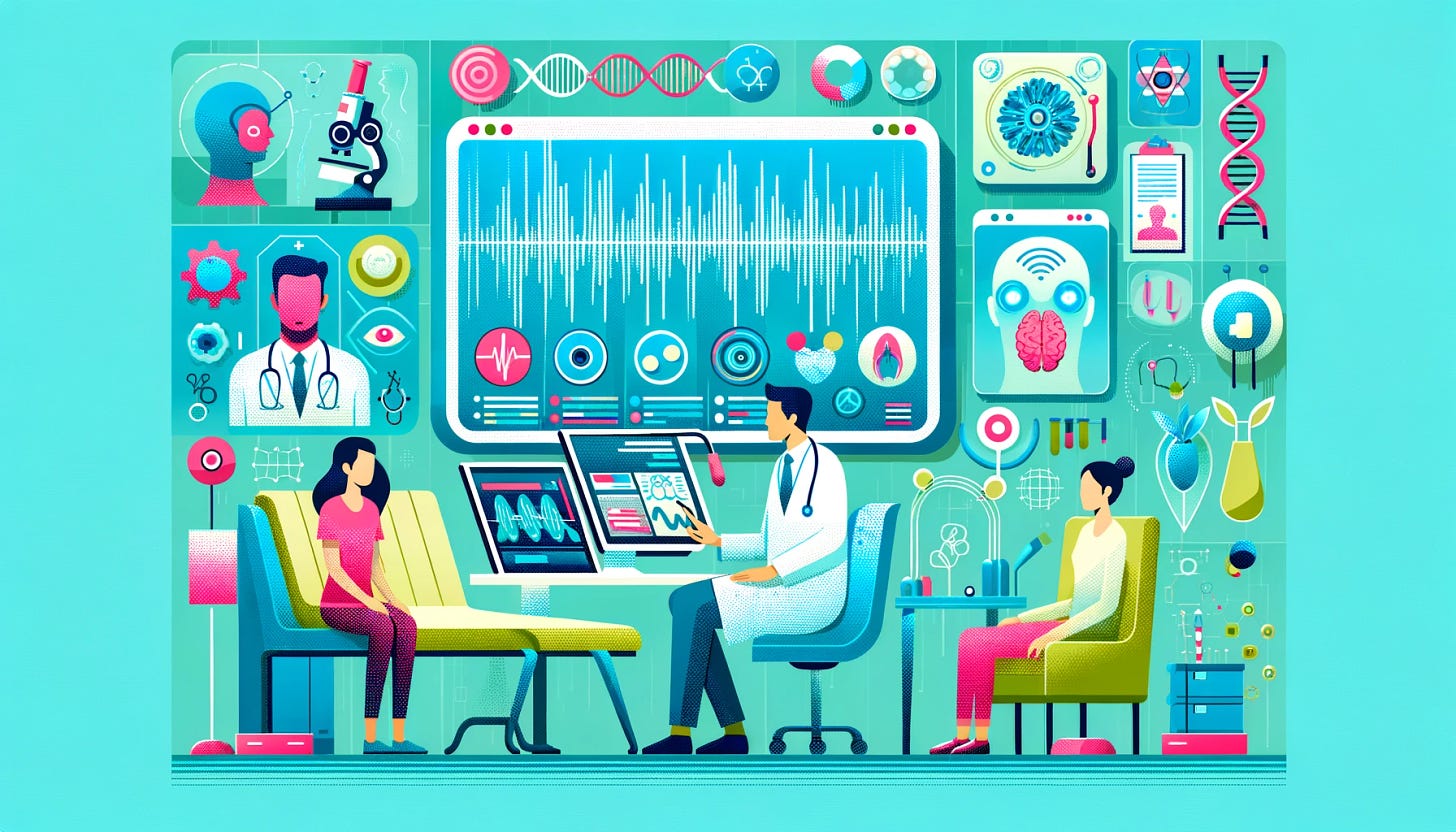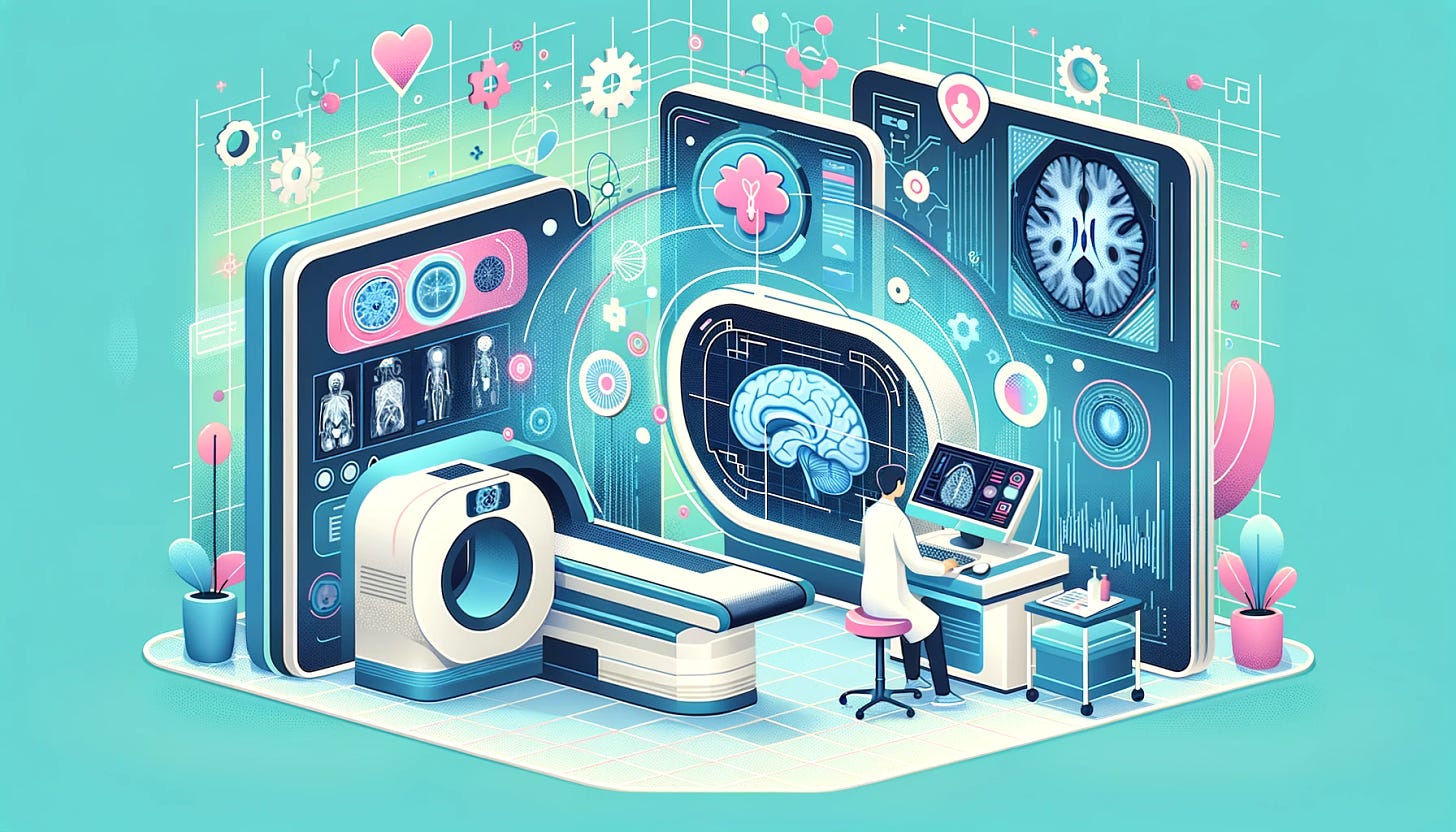
Chat GPT-4o: Pioneering AI in Medicine
OpenAI’s latest breakthrough, Chat GPT-4o, introduces a multimodal model poised to transform medical practice by integrating text, audio, and visual data. This advanced AI can process complex datasets in real-time, making it a game-changer for patient care and medical diagnostics.
Multimodal Mastery
Chat GPT-4o excels in understanding a mix of inputs, from medical imagery to spoken symptoms, providing insights with accuracy previously unattainable. Its ability to interpret facial expressions and analyze visual information allows for more nuanced patient interactions and quicker, more accurate diagnoses.
Enhancing Patient Care
From taking comprehensive patient histories to managing medications through image recognition, GPT-4o’s capabilities extend to simplifying complex medical advice into understandable terms for patients. It also serves as an educational tool, illustrating complicated medical processes in a more digestible format.
Future Prospects
The integration of GPT-4o in healthcare promises a more personalized, efficient, and accessible medical service. Its capacity to handle multiple data types simultaneously heralds a new era of AI in medicine, where technology and healthcare converge to enhance patient outcomes.
Looking ahead: As AI technologies like GPT-4o continue to evolve, their ethical implementation will be crucial in shaping a future where healthcare is not only smarter but also more connected and responsive to individual needs.

Ethical AI in Healthcare: A Call for Responsible Governance
The Federation of State Medical Boards (FSMB) has recently adopted a pivotal framework aimed at guiding the ethical and responsible use of Artificial Intelligence (AI) in clinical practice. The new guidelines focus on safeguarding patient well-being while promoting regulatory efficiency and avoiding over-regulation.
Key Focus Areas
The guidelines emphasize the importance of education, human accountability, informed consent, data privacy, and proactive management of liability concerns in the use of AI in healthcare. State medical boards are encouraged to collaborate with experts and anchor AI governance in established ethical principles to ensure that AI enhances, rather than replaces, human judgment and medical expertise.
Collaborative Regulation
The document calls for continual monitoring and collaboration among healthcare professionals, systems, and regulatory agencies. This cooperative approach aims to address the rapid advancements in AI technology effectively and ethically, ensuring that medical practices benefit from AI without compromising professional standards or patient care.
Forward-Looking Strategies
The FSMB highlights the need for a dynamic regulatory landscape that can keep pace with technological developments. By focusing on structured education and transparent governance, the guidelines aim to foster a healthcare environment that uses AI to improve quality, access, and efficiency while maintaining the trust and safety of patients.
Looking ahead: As AI technologies become increasingly integrated into medical practice, the focus on ethical considerations and regulatory oversight will be crucial in harnessing their potential responsibly.

AI in Radiology: A Delicate Balance of Trust and Technology
The advent of AI in healthcare, especially in radiology, presents a complex blend of promise and skepticism. While AI promises to enhance diagnostic accuracy and efficiency, its integration into radiology is met with cautious optimism by professionals within the field.
Technological Advancements vs. Professional Skepticism
AI’s capability to analyze scans and aid in diagnosing is remarkable, with the FDA approving over 700 AI algorithms for use, predominantly in radiology. Despite this, only a small fraction of radiology practices have adopted these technologies, primarily due to concerns about their real-world efficacy and transparency.
The Cultural Shift in Medicine
Dr. Ronald Summers, a radiologist at the NIH, advocates for the immediate use of AI to leverage its benefits fully. However, adoption lags due to a cultural hesitancy within the medical community, which values traditional methods and human oversight.
Legal and Ethical Considerations
As AI systems become more autonomous, questions arise about liability and trust, especially if an AI system fails to detect a condition like cancer. These concerns underline the need for AI to operate under human supervision, much like autopilot systems in aviation.
Future Outlook
Although AI technology is ready to take on more autonomous roles in diagnostic processes, the medical community remains cautious. For AI to truly revolutionize radiology, it must prove not only its technological capabilities but also gain the trust of practitioners and patients alike.
What’s next? The journey of AI in radiology continues to evolve, balancing technological innovation with the critical need for human expertise and ethical considerations.










